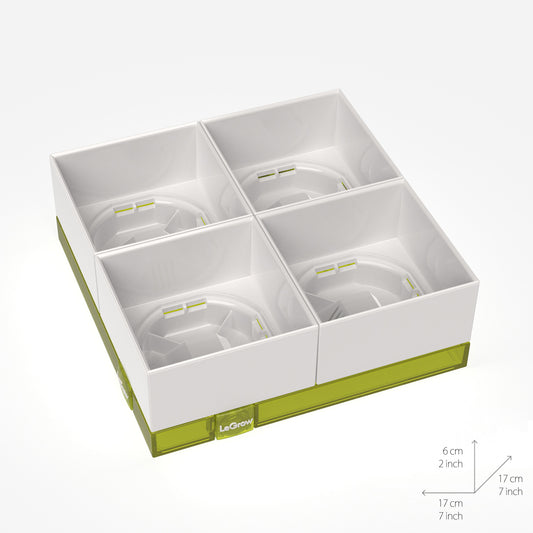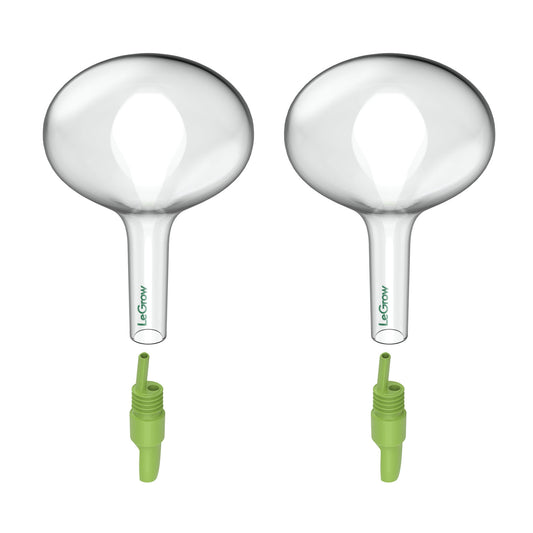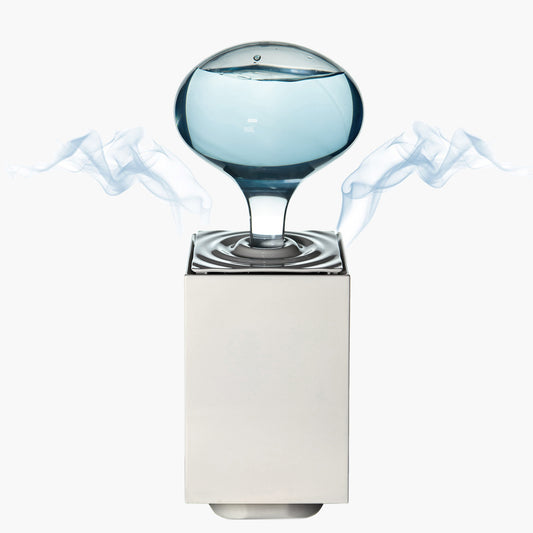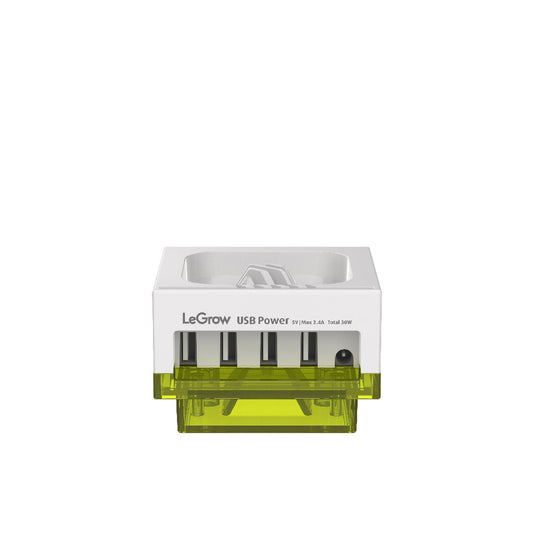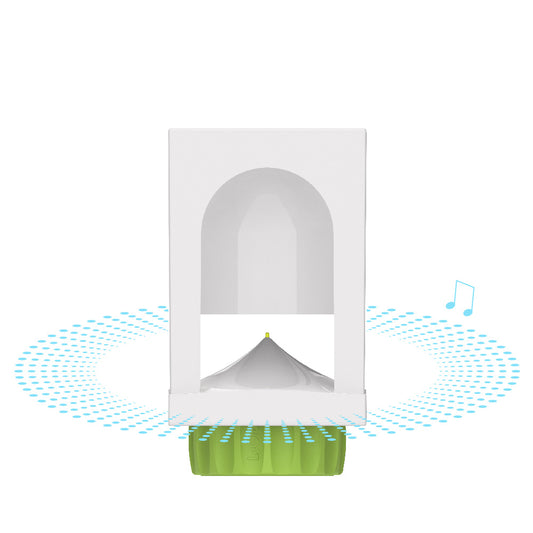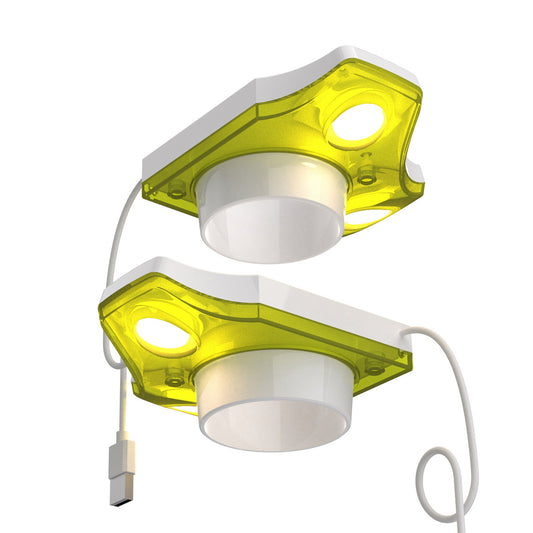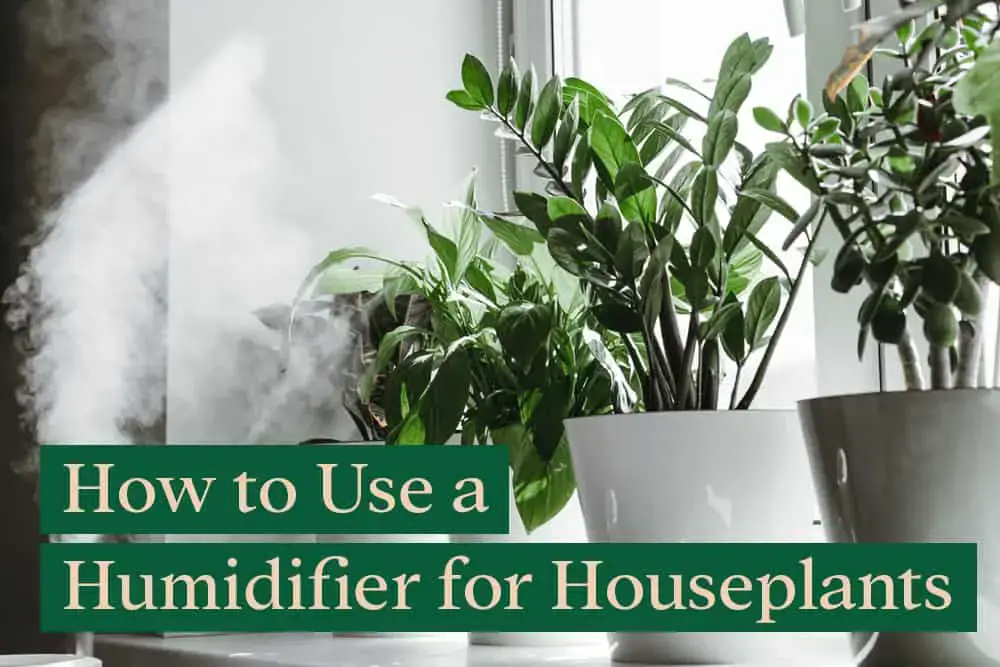
Some of the most popular houseplants are from tropical climates and therefore thrive in areas with high humidity. If the air in your house is dry, such as during the winter months, your plants may benefit from the use of a humidifier.
Compared to misting or using a pebble tray, a humidifier will provide a more constant humidity level for your tropical houseplants.
For best results, run your plants’ humidifier for a few hours every day between sunrise and midday. The humidifier should be in the same room as your humidity-loving plants but not so close to them that moisture starts to condense on the leaves.
When in doubt about your home’s humidity level, use a hygrometer to get an exact measurement. Different plants have different preferred ranges, but most will be happy in a range between 40% and 60% relative humidity.
This article will also cover:
- Why You Need a Humidifier for Houseplants
- When to use a Humidifier?
- Best Practices for Using a Plant Humidifier
- How to Choose the Right Plant Humidifier for You
- The Humidifiers I am Currently Using
Let’s get started!
Disclaimer: As an Amazon Associate I earn from qualifying purchases.
Why do Houseplants need a Humidifier?
Except for succulents and cacti, many popular houseplants thrive when there is more moisture in the air. Plants like orchids and aroids (like peace lily and Monstera), just to name a few, are acclimated to a tropical climate.
Unlike succulents, which store water in their fleshy leaves, these tropical plants are not used to lower humidity.
There are a couple of ways plants can absorb moisture from their environment, and these methods can vary wildly from one plant to the next, depending on what kind of climate it is from.
Some Houseplants has Less Robust Root System
The primary way for a plant to absorb water is through its roots in the ground. Plants growing in the desert evolved to have robust root systems to take advantage of any water they can find.
On the other hand, Tropical Plants , don’t really need such robust roots system because where they originated there’s always water everywhere!
Epiphytic plants have evolved to absorb moisture from the air. This kind of plant usually grows on or up other plants like trees. Some commonly-known epiphytes include orchids, tillandsia (air plants), and monstera.
Some of these houseplants have roots in the soil, some have structural aerial roots, and some may have no roots at all! For this reason, epiphytes need higher humidity to thrive.
Some Houseplants Has Thin Leaf System
So once plants take up water, where does it go?
Some complicated biological processes are involved, but the water basically goes up to the leaves, where it is either stored or released into the air.
Succulents and cacti store the water in their leaves for later when there might not be any water. This makes them very resilient plants.
Tropical plants do not have anywhere in their leaves to store water because they have never needed to do so with all the humidity and rainfall all the time! Because of how much water is usually present, these plants can release excess water from their leaves in a process called guttation.
Leaves have pores called stomata that basically let the plant breathe. They let in carbon dioxide and release water vapor. They can open or close depending on the humidity level. But if they are closed for too long because of dry air, it is as if the plant is holding its breath!
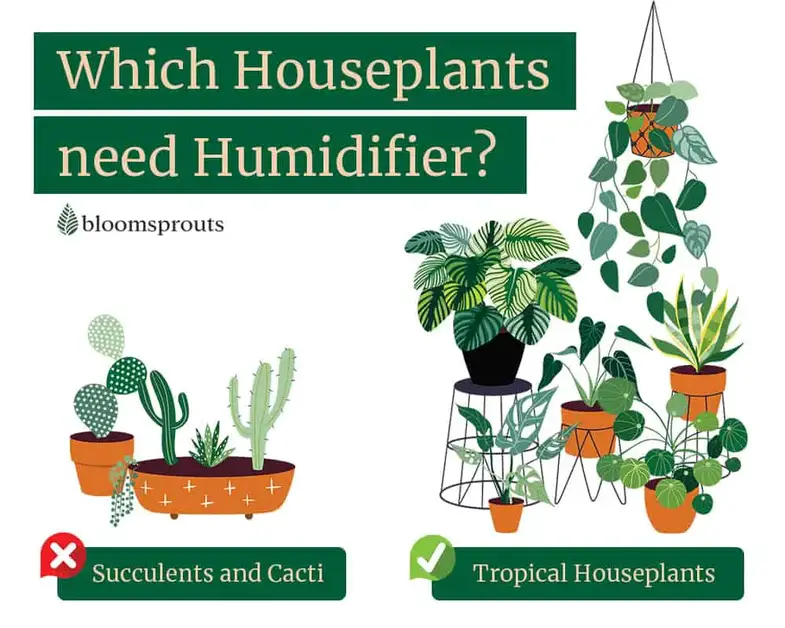
Indoor environment has less humidity
Okay, now that we understand a little more about how different plants grow in their natural climates, let’s look at the environment inside your home.
When the weather is warm and pleasant, your home will maintain relative humidity between 40% and 60%, which is good for most houseplants. However, in the winter, with the heater on, that can drop to as low as 10% relative humidity.
In the same way that this dry air can give you dry skin and a scratchy throat, it also causes distress for your tropical plants that require more moisture in the air.
Misting or Pebble tray is not enough
There is a common theory that misting your plants will help increase the humidity. Unfortunately, it doesn’t really work. Misting your plant’s leaves will increase the humidity slightly for a very short amount of time. For this to be an effective tool, you would have to mist every 30 minutes.
Additionally, if you mist your plants in bright, direct sunlight, the droplets leftover can act like little magnifying glasses and burn spots on the leaves. Also, too much moisture at night can take too long to evaporate and will act as an open invitation to mold and fungus. No, thank you!
Misting is a great exercise for your forearms, and that’s about all it’s good for.
Placing a pebble tray with water near your plants is another common method to increase the relative humidity. They work by introducing water to the area near your plants. Over time, that water evaporates into the air and increases the relative humidity in that area.
Pebble tray works better than misting, but it is not as effective as using a humidifier.
When to use a humidifier?
Let’s look at when you should be using a humidifier for your plants. What time of day should you turn it on? How about the season or time of year? How does the room condition come into play? Most importantly, how much humidity is too much?

Best time to turn it on
The best time to run a humidifier for your plants is in the morning between sunrise and midday. You can turn it on with breakfast and turn it off when you eat lunch.
This will provide plenty of humidity for your plants!
If your humidity is still a little low after checking it with a hygrometer, you can let the humidifier run a little longer into the afternoon.
Don’t run it too late into the evening or at night when the sun is down. Too much moisture at night will disrupt your plants’ natural transpiration process (their way of breathing).
Usually, if the humidity is below 40%, you will need to run the plants’ humidifier. Once the air reaches over 65% humidity, you can turn off the humidifier.
Weather & Season
Every location has its own specific climate, but in general, humidity is higher in the summer and very low in the winter.
Some of this is because of chemistry and physics. Warmer air has the capacity to hold more water vapor, while cooler air cannot hold as much vapor. There is less ambient moisture in the winter because of the cold, and then heating the air in the home makes the relative humidity drop way down.
You should run a humidifier for your plants in the winter when the air is dry, and in the summer too if you live in a climate with low humidity.
How much humidity is too much?
Humidity over 80% is excessive for any plant. Too much water vapor in the air can also prevent your plant from being able to “breathe” properly and can also lead to issues such as mold and fungus infestations.
Too much humidity can be negated by introducing better airflow with a fan and moving the humidifier a few feet away from your plants.
Some humidifiers come with a built-in humidistat so you can check the relative humidity of the room easily. If yours does not have that function, you should get a hygrometer to double-check your room’s humidity every so often. Your plants will thank you.
Best Practices for Using Plant Humidifiers
How often should I use a humidifier?
It would be best if you used the humidifier for your plants every day. Use a hygrometer in the morning to check the moisture level in the air. If it is below 40% relative humidity, time to turn on the humidifier!
As mentioned earlier, this is more likely to be the case in the winter when the temperature drops and the heaters suck up all the extra moisture in your home. You are not likely to need a humidifier for your plants as often in the summer.
How long do you run a humidifier for plants?
You should run your humidifier for at least 4 to 5 hours every day in the morning until midday. Running it too late into the afternoon risks leaving too much moisture in the air overnight when the plant doesn’t absorb it as much, which increases the risk for mold or fungus.
Where to place humidifier?
It would help if you placed the humidifier a few feet away from your plants, preferably in the center of the room. Placing it too close to the plants could cause too much water to condense on the leaves and soil. Too much water on the leaves is an invitation for mold and fungus!
Elevate the humidifier a few feet off the ground on a table or desk. Keep it away from porous surfaces like wood or fabric curtains. These porous surfaces are more likely to develop mold when left in overly wet air.
Do not place the humidifier on a soft surface like carpet. Many of these devices have air intakes on the bottom, and a carpet or rug would block that area.
What type of water to use?
The best practice is to use filtered or distilled water in your plants’ humidifier. This will ensure that only pure water is being vaporized into your home.
Using distilled water will also keep algae and bacteria from growing in the water tank for longer, meaning you won’t have to clean it as frequently.
If you decide that you want to use tap water in your humidifier, be aware that the minerals can cause a scale buildup in the device over time. Using filtered or distilled water will prevent you from cleaning the device as often and extending the humidifier’s lifetime.
Regular cleaning for a humidifier
Every so often, you will need to clean your plants’ humidifier. This could be due to mineral buildup from the water or algae and bacteria, which is attracted to moisture.
If your humidifier doesn’t get cleaned for a long time, there will be a buildup of bacterial gross stuff that you do not want to be spewing into the air in your home!
You should give your humidifier deep cleaning every week.
First, pour vinegar into the base and let it soak. Then use diluted bleach or peroxide to clean out the water tank to remove any slime or smells. Rinse the parts out with tap water before filling it back up for daily use.
Some humidifiers have water filters. These will need to be replaced regularly. Each product is different, so you will have to check the specifications of your device.

